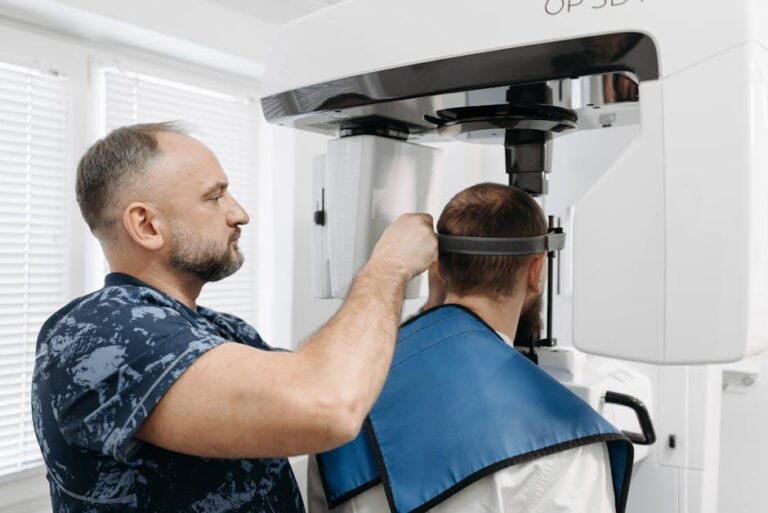
3D Scans & Future Dental Tech with Zelko Relic, Align Technology – TechInformed
The dental industry is undergoing a remarkable transformation thanks to advancements in digital technology. One of the key game-changers revolutionizing oral healthcare is 3D scanning technology. In this comprehensive article, we dive deep into the future of dental tech with insights from Zelko Relic of Align Technology, a leader in innovative orthodontic solutions. Whether you’re a dental professional or an enthusiast keen on the latest innovations, this guide will shed light on how 3D scans and other emerging technologies are reshaping the field.
Understanding 3D Scans in Dentistry
3D dental scanning involves capturing ultra-precise images and measurements of a patient’s teeth, gums, and oral cavity in three dimensions. Unlike traditional molds and impressions, digital scans eliminate physical discomfort and dramatically improve accuracy.
How Do 3D Scans Work?
- Intraoral Scanners: These handheld devices capture detailed optical impressions in seconds.
- CBCT (Cone Beam Computed Tomography): Produces high-resolution 3D X-ray images of teeth, bone structure, and soft tissues.
- Desktop Scanners: Used to digitize dental models or impressions for further analysis.
Zelko Relic emphasizes that 3D scans serve as the foundational tool for digital workflows, such as designing clear aligners, crowns, bridges, and implants with outstanding precision.
Zelko Relic on the Future of Dental Technology at Align Technology
Zelko Relic, a key figure at Align Technology, discusses how the company leverages 3D scanning and artificial intelligence to empower dental professionals worldwide.
“The integration of 3D scans with AI-driven treatment planning is allowing us to tailor orthodontic and restorative care uniquely to each patient’s needs. This personalization leads to faster treatments, better outcomes, and increased patient satisfaction.” – Zelko Relic, Align Technology
Innovations Led by Align Technology
- iTero Scanner: Industry-leading intraoral scanner that captures precise 3D images for Invisalign and restorative work.
- SmartForce Attachments: 3D-designed attachments enhance tooth movement efficiency during orthodontic treatment.
- Digital Treatment Simulation: Virtual visualization tools that help patients see projected results before treatment begins.
- AI-Enabled Case Analysis: Software algorithms that analyze scans for faster diagnosis and treatment planning.
Benefits of 3D Scanning and Digital Dentistry
Incorporating 3D scanning into dental practice offers numerous benefits not only for clinicians but also for patients.
| Benefit | Description |
|---|---|
| Accuracy & Precision | 3D scans capture millimeter-level details, reducing errors compared to manual impressions. |
| Patient Comfort | Non-invasive scanning reduces gag reflex and discomfort during impression procedures. |
| Time Efficiency | Faster data capture and processing speed up treatment planning and delivery. |
| Improved Diagnostics | High-resolution imaging reveals underlying issues undetectable by traditional methods. |
| Enhanced Communication | Digital models facilitate clearer communication between dentists, labs, and patients. |
Practical Tips for Dentists Incorporating 3D Scanners
For dental professionals looking to adopt 3D scanning, Zelko Relic advises thoughtful implementation and continued learning.
- Choose the Right Scanner: Assess your practice’s needs—consider factors like scan speed, accuracy, and integration with existing systems.
- Train Your Team: Provide adequate training sessions so staff feel comfortable and efficient operating new devices.
- Incorporate Digital Workflows: Use 3D scans to streamline treatment planning, lab communication, and patient education.
- Stay Updated: The technology is evolving rapidly; stay informed on software updates and emerging tools.
- Engage Patients: Share 3D visualizations with patients during consultations to increase treatment acceptance and trust.
Case Study: Invisalign Treatment Powered by iTero 3D Scans
One of the most successful applications of 3D scans is in Invisalign clear aligner therapy. Thanks to Align Technology’s iTero scanner, orthodontists can capture an exact digital impression, which is then used to fabricate custom aligners with unparalleled fit and comfort.
| Aspect | Before 3D Scans | After 3D Scans Implementation |
|---|---|---|
| Impression Method | Physical molds using alginate impressions | Digital intraoral scans with iTero |
| Patient Experience | Uncomfortable, time-consuming | Comfortable, quick capture |
| Treatment Planning | Manual and less predictable | AI-based, predictive simulation |
| Aligner Fit Quality | Variable fit requiring adjustments | High precision fit, fewer refinements |
Looking Ahead: The Next Frontier in Dental Technology
The future of dental tech promises exciting innovations beyond just 3D scanning. Some cutting-edge trends Zelko Relic highlights include:
- Integration of AI and Machine Learning: For more personalized and predictive treatment protocols.
- Augmented Reality (AR) & Virtual Reality (VR): Enhanced visualization tools for patient education and surgical planning.
- 3D Printing Advances: In-house fabrication of dental devices from digital scans.
- Remote Monitoring & Teledentistry: Using digital scans for virtual patient check-ups.
Conclusion
3D scans are undeniably transforming dentistry, making treatments more precise, comfortable, and efficient. With leaders like Zelko Relic spearheading innovation at Align Technology, the integration of digital technology into everyday dental care is becoming the new standard. For providers and patients alike, embracing future dental tech means better outcomes and a smoother treatment experience. Whether you’re an aspiring digital dentistry specialist or simply curious about the field, understanding 3D scans and their limitless potential is essential in today’s evolving oral healthcare landscape.
Stay informed, stay innovative, and witness firsthand how technology is shaping the smile of tomorrow.


